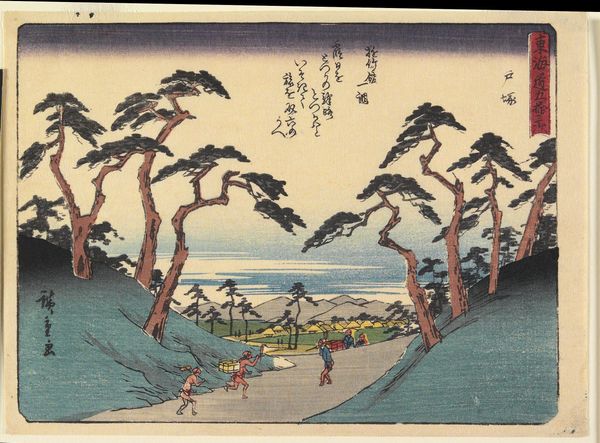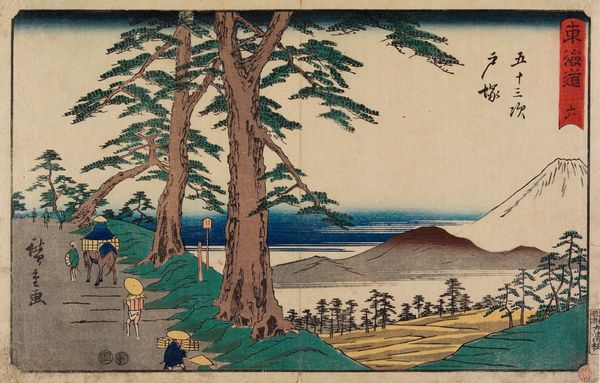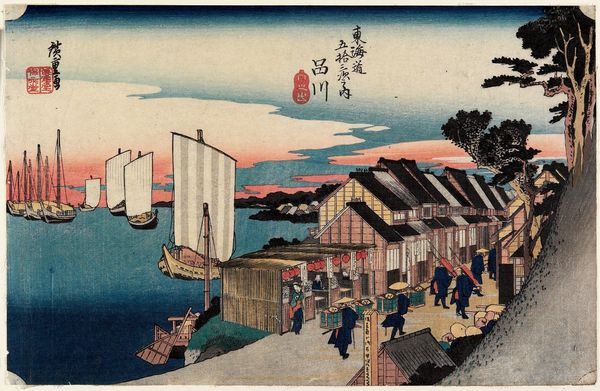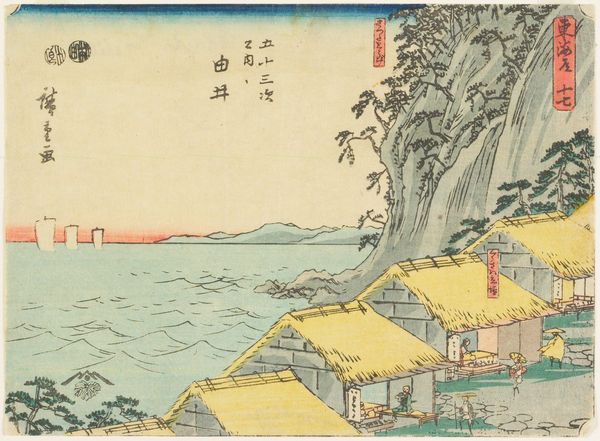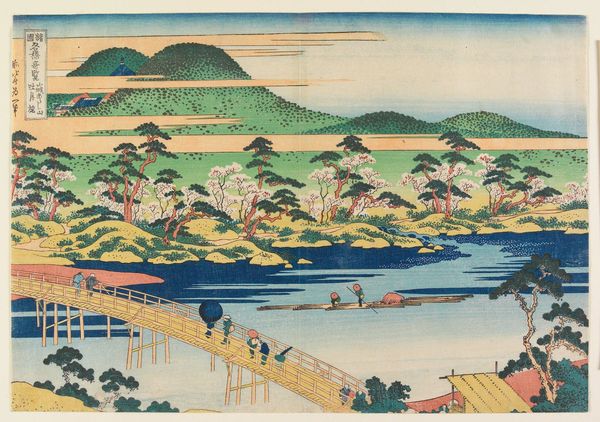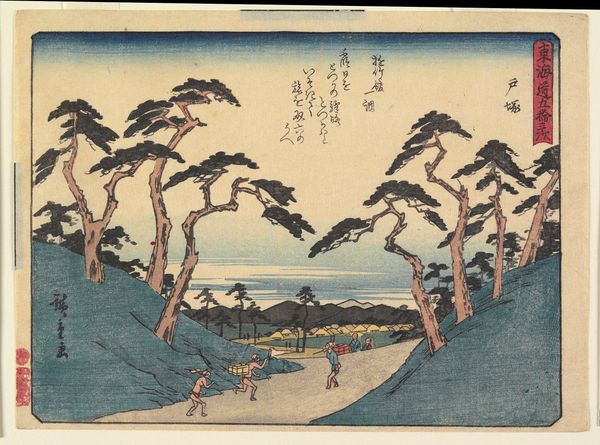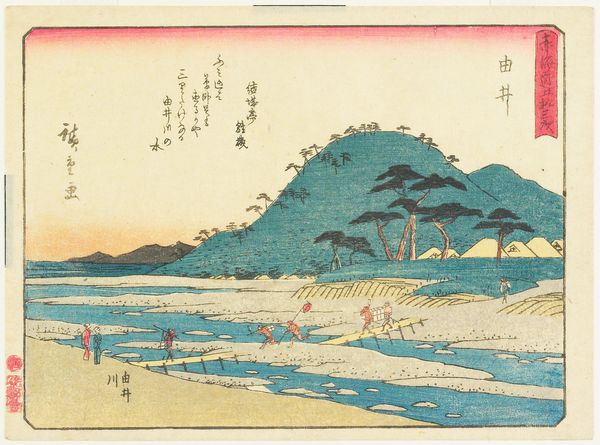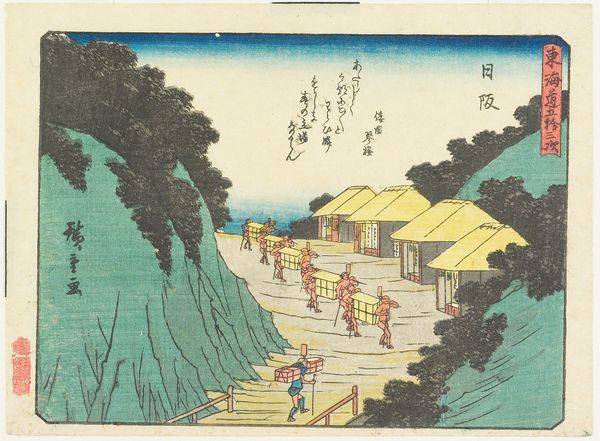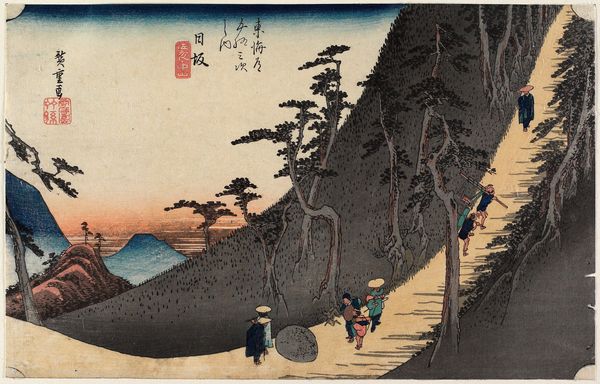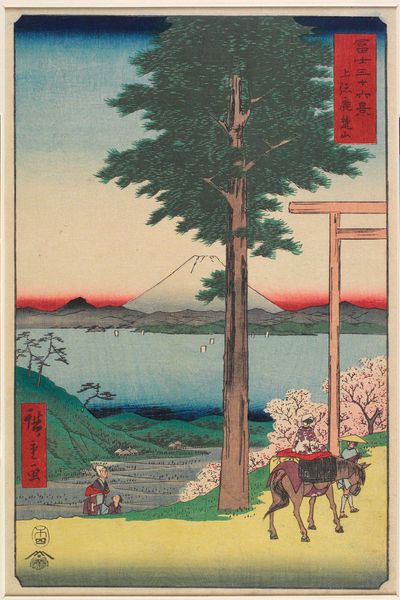
print, plein-air, ink, woodblock-print
# print
#
plein-air
#
asian-art
#
landscape
#
ukiyo-e
#
ink
#
woodblock-print
Dimensions: 8 5/8 × 13 5/8 in. (21.9 × 34.6 cm) (image, horizontal ōban)
Copyright: Public Domain
Editor: We're looking at Utagawa Hiroshige's "Mount Kiyozumi in Awa Province," possibly from 1858. It's a woodblock print, and the scene is so serene. It captures a beautiful view but also what appears to be a well-worn path with people carrying loads. What stands out to you in this piece? Curator: Immediately, I see a narrative concerning labor and the picturesque. We’re presented with the ‘beauty’ of the landscape, but how is that beauty shaped by the labor that facilitates its accessibility and consumption? Look at the dark, dominating road: its construction demanded intensive manual labor. Editor: So, the road isn't just a pathway, it's part of the story? Curator: Precisely. Hiroshige presents us with a commercially viable image – part of the ukiyo-e tradition mass-produced for consumption. The very act of printing multiple copies and distributing them for profit underscores the work's connection to consumption and production. Consider the materials: the woodblock itself, the inks, the paper, the artisan's skill… all commodities in their own right. Editor: That’s interesting, I didn’t really think about all the labour and resources needed to produce and sell these prints. Does that challenge how we typically view landscape prints? Curator: Absolutely. Traditional art history often isolates the 'artist' and their vision. But by focusing on materiality, we see art deeply embedded in a network of social and economic relations. Even the "plein-air" aspect hints at labor, the artist having to transport materials to document the scene, the laborers transporting goods up that steep road. Editor: I never considered how the materiality and production affected the meaning. I see it in a completely new light now. Curator: Exactly. Recognizing these connections enriches our understanding of art and society in totality.
Comments
No comments
Be the first to comment and join the conversation on the ultimate creative platform.
